Modern classrooms consist of various types of educational technology like smart classroom, gamification, LMS, augmented reality and virtual reality etc.
Table of Contents
Types of educational technology consist of a variety of technologies used in highly-engaged classrooms for learning. Gamification, Learning Management Systems, interactive whiteboards, robotics are various types of technology used in a modern classroom environment. Further, with the use of these technologies learning in a classroom becomes fun and easier.
- Gamification
- Learning Management System
- Augmented Reality and Virtual Reality
- Smart Classroom
- Robotics
- 3D Printers
Types of Educational Technology
Various types of educational technology create an interactive learning environment among educators and learners. It breaks the concepts into fundamentals and then teaches students using simple technologies. Students can go through different types of technology used in the classroom, as stated below.
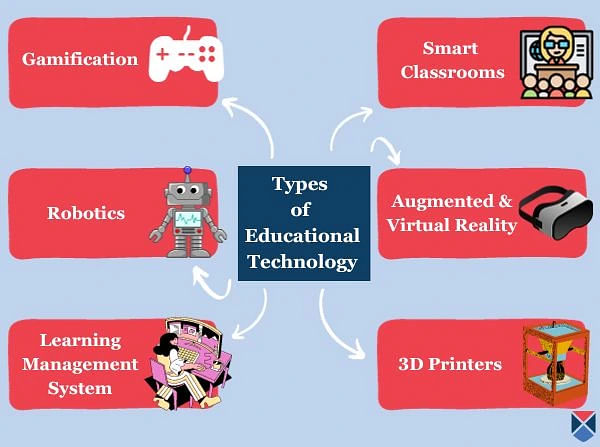
1. Gamification
Gamification is an innovative educational technology that focuses on building an interactive learning space through games. It incorporates game elements in a classroom and encourages students to achieve more. Thus, students develop problem-solving abilities and critical thinking skills. Further, it also builds strong communication skills in learners and teaches teamwork and collaboration.
Key Features:
Gamification elements ignite a sense of accomplishment and fuel motivation to keep learning. The below given are the key elements of gamification:
- Points: Gamification rewards learners for finishing tasks or solving issues.
- Badges: Acknowledging achievements and landmarks.
- Leaderboards: Motivating friendly competition among counterparts.
- Quests: Questioning students to finish tasks or solve problems consecutively.
2. Learning Management System
Learning Management systems allow students to descend into online learning at their speed. It is an online platform that facilitates the learning process through modern learning methodology where every learner's mind is different, and they must learn at their own pace. It helps educators to create, deliver, and organize course content with ease while learners can access resources, finish tasks, and follow their improvement.
LMS types of learning technology believe in adapting various learning styles and customizing lessons based on student's needs. It's a customized form of learning where students have control over their learning process in an online classroom.
Key Features:
Learning Management Systems types of technology enable learners to learn at their own pace while accessing resources 24/7. These types of educational technology give constant feedback regarding the progress that helps learners to improve. Students can find the key features stated below.
- Tailored Education: The LMS caters to various learning styles, allowing learners to progress at a speed in their own time.
- Easy Access: Students can study anytime, anywhere and can access resources 24/7 online.
- Cooperation: Online meetings and chat rooms encourage collaboration and peer-to-peer help.
- Improvement Tracking: Real-time task response and improvement tracking help learners stay on track and encouraged during studies.
- Less costly: LMS platforms can save expenses on physical resources and travel expenditures.
Also Check: Modern Education System: Purpose, Benefits, Challenges
3. Augmented Reality and Virtual Reality
Augmented Reality and Virtual Reality are cutting-edge tools that transform the education landscape. It gives learners the curiosity to learn and boosts engagement in a classroom.
Augmented Reality
Augmented reality caters to academic experiences, equipping digital content to the real world. Augmented reality breaks the boundaries between fiction and reality. It enriches student learning and promotes a deeper understanding of the topic.
Key Features:
Augmented reality is a method in which students have an experience of learning from the classroom without movement. Below are the key features of augmented reality.
- Engaging: Students engage with virtual objects, making lessons more interesting.
- Flexible: AR adapts to different instructional methods and subjects.
- Accessible: Most gadgets, smartphones and tablets support augmented reality apps, making them widely known.
Virtual Reality
Virtual reality immerses students in a virtual classroom where they can dig into new worlds and gain hands-on experience without exiting their seats. It is a captivating online education that transcends traditional instructional barriers.
Key Features:
Virtual reality is an illusion that is not real but a technology that can make things look real in a classroom. It is very engaging and entertaining for learners to learn concepts in that manner. Below are some of the key features of virtual reality types of educational technology.
- Immersive: Candidates are fully engaged in a 360-degree learning environment.
- Experiential: Virtual reality allows experiential learning and deep understanding of the topics.
- Collaborative: Virtual Reality promotes teamwork and cooperation in shared virtual rooms.
4. Smart Classroom
Smart classrooms are the types of educational technology that improve the education experience, making learning interactive, engaging, and practical.
Key Features:
Smart Classrooms consist of interactive whiteboards, adaptive displays, smart sensors, and an automated study environment that sets them apart from traditional classroom systems. Below given are some of the key features of a smart classroom.
- Collaboration: Smart classrooms encourage teamwork and communication that enable students to cooperate in real-time environments, remote or in person.
- Interactivity: Innovative tools such as interactive whiteboards and virtual labs bring classes to life, sparking interest and boosting comprehension among learners. Smart Classrooms are adaptable to student's needs and levels.
- Personalization: Evolved types of educational technology in the smart classroom help educators tailor their techniques. They can customize their teaching types based on each student's unique needs, maximizing learning results.
- Accessibility: Digital resources and content are always available, guaranteeing that learners can access materials anytime from anywhere.
Also Check: 10 Prioritization Techniques for Student Productivity
5. Robotics
Robotics is a branch of educational technology that uses artificial intelligence in a classroom. These types of educational technology are very advanced forms of learning and use robots in a classroom. Robotics provides a real, interactive feature that encourages curiosity, creativity, and problem-solving aptitudes.
Students are fascinated by the possibilities of having robots by their side to teach them and solve their doubts.
Key Features:
Robots are capable of all types of tasks, and there can be less human interaction with the help of robots. Below are some of the key features of using robotics types of educational technology:
- Automated Learning: Robots can continuously assess students' performance and give valuable feedback.
- Information Transparency: The robots have high research skills and can pick up huge chunks of information within seconds. By equipping robots in a classroom, they can provide exact information that can be helpful for learners.
- Assistants: Robots can be teaching assistants and can help with a lot of classroom activities and tasks for the teachers, which will save a lot of time.
6. 3D Printers
3D printers are the types of educational technology that enable students to bring ideas to life by making physical objects from digital designs. Its cutting-edge technology in the classroom, through which educators can boost creativity, promote problem-solving skills, and improve learning outcomes.
Key Features:
3D Printers are the types of educational technology that are already used in various classrooms and learning spaces. It allows students to create a design digitally and print it in no time. Below are the key features of 3D printer types of educational technology.
- Engaging: 3D printing engages learners by allowing them to draw creative diagrams and making lectures more memorable.
- Promotes Collaboration: Students can work jointly on projects, communicating ideas and refining designs to acquire teamwork skills.
- Real-World Applications: 3D printing has beneficial uses in various industries, training students for future occupations in fields such as engineering, architecture, etc.
- Customization: Educators can tailor education materials to each student's needs, catering to various interests and capabilities.
Also Check: 10 Applications of AI in Education in 2023
Technological Tools Used in Education
There is a wide range of technological tools like adaptive whiteboards, applications, and smart cameras that make learning more interactive. Students can go through the 3 major types of educational technology tools below.
1. Smart Whiteboards
Smart whiteboards are interactive, adaptive, sizable digital displays that showcase educational content and allow students to engage with the digital content. It is widely used in project collaboration, annotating images, and in classroom presentations.
2. Educational Apps
Educational apps are applications that are designed keeping in mind the learning needs of the individuals in a classroom. It consists of educational content that is engaging and interactive. Educational apps are the types of educational technology that track students' progress and give feedback on their performances. Further, students can access them with their smartphones, tablets, and laptops.
3. Digital Cameras
Digital cameras are the types of educational technology that allow students to capture images and create engaging multimedia presentations. These can be used in a classroom environment or during field surveys, trips, and group studies.
Also Check: Importance of Technology in Education in 2023
Types of Technologically Advanced Learning Techniques
Technological advancement allows different approaches to learning. Students can get quality education without physical presence due to different types of educational technology. There are various approaches to online learning catering to the importance of education for every individual. Students can go through various online learning approaches listed below.
1. Asynchronous Learning
Asynchronous Learning is a form of online learning where pre-recorded classes are available. It consists of pre-recorded lessons, audio and videos. Students in this type of education technology contact educators through mail for queries. It is a practical learning method that doesn't require physical presence in a classroom environment.
2. Synchronous Learning
In these types of education technology, students learn without the presence of a teacher through gadgets like mobile and tablets. This means that learners follow lectures from home or the classroom while the teacher is physically not present. In this matter, the educator maintains contact with students and responds to their questions in real time.
3. Computer-Supported Collaborative Learning
Computer-supported collaborative learning is a method in which students do a task by not being in the classroom and connecting from anywhere. Students from various schools or even different countries can collaborate on the same project together. Teachers in these types of educational technology just supervise the children.


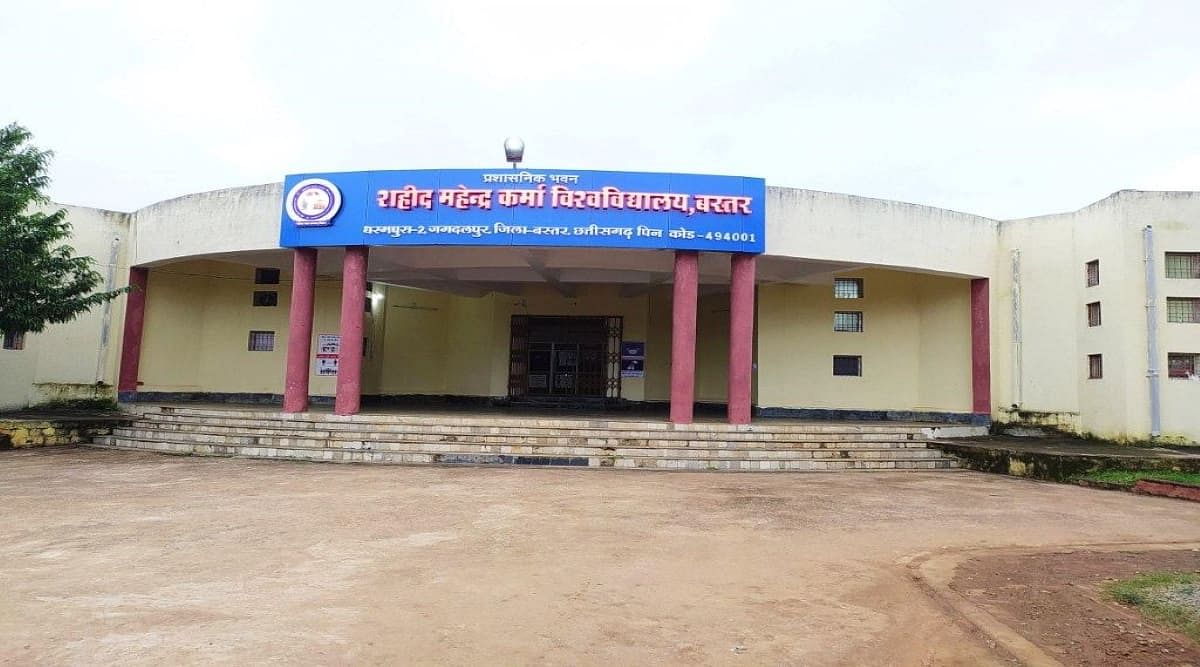











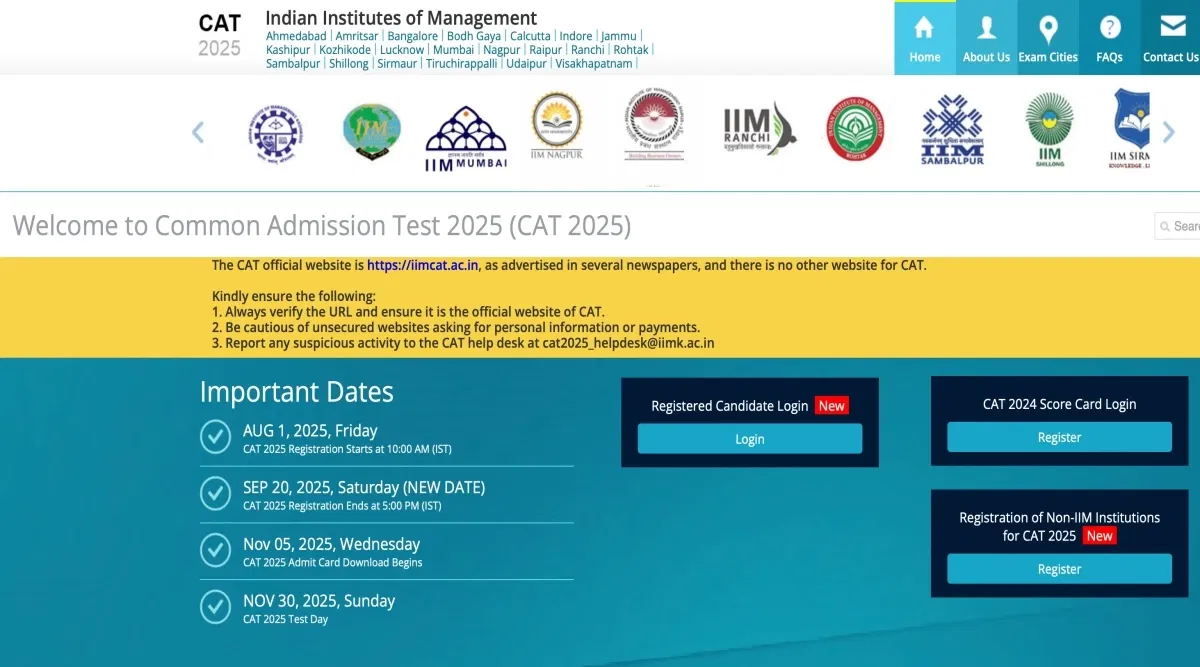





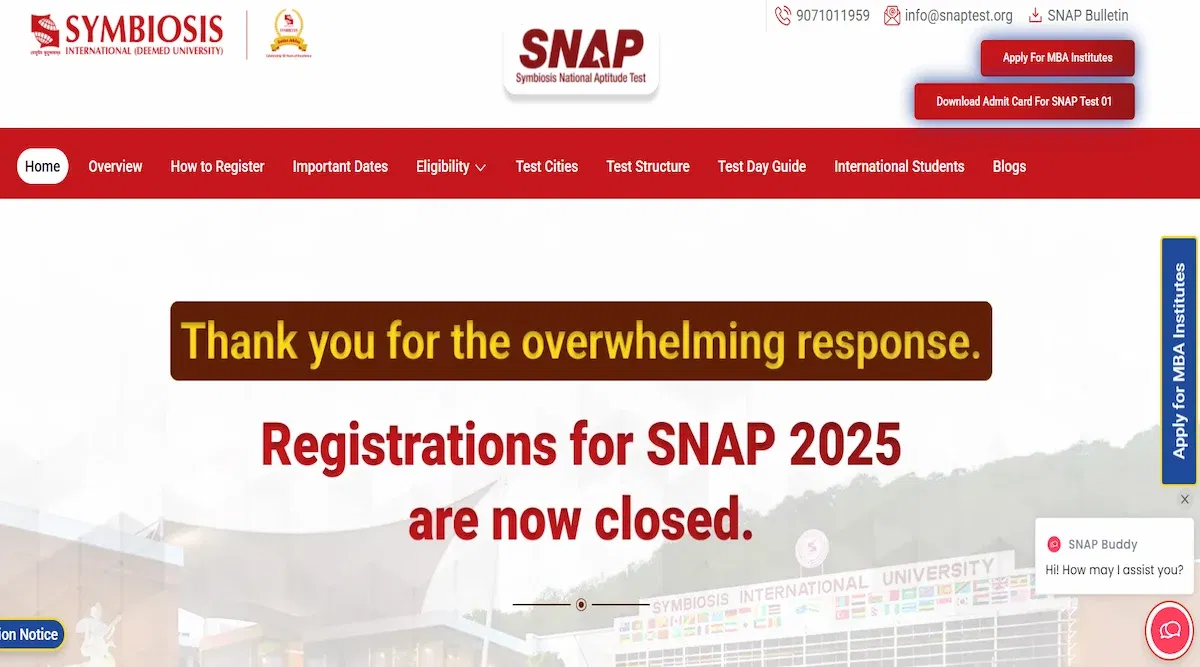
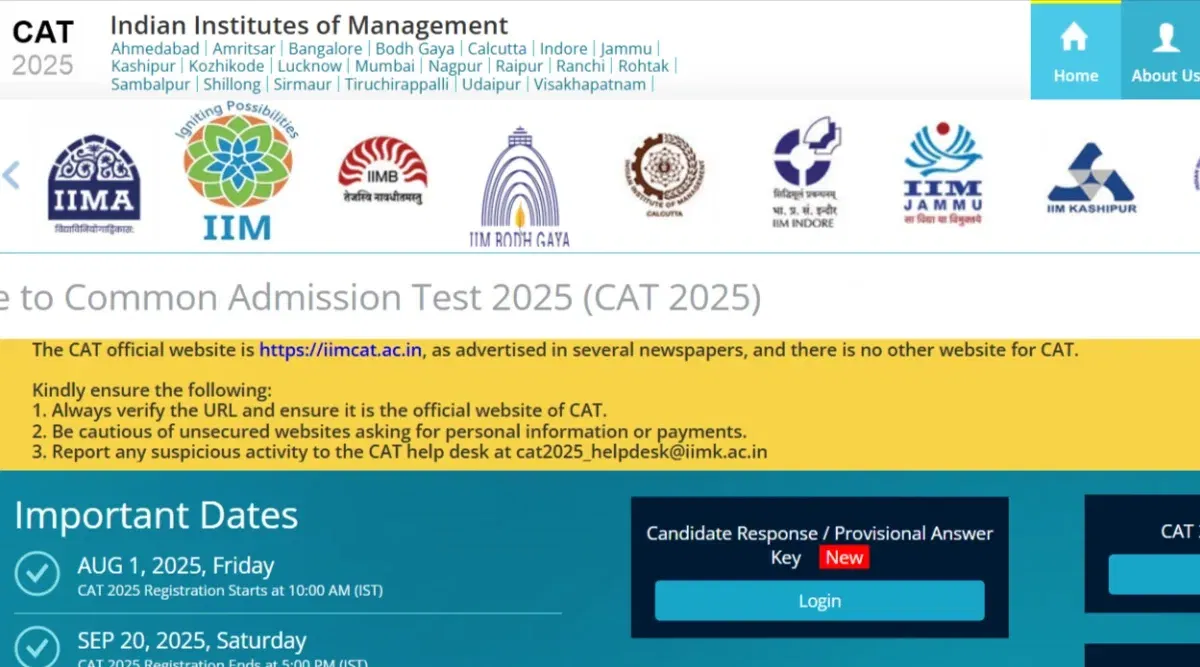

POST YOUR COMMENT